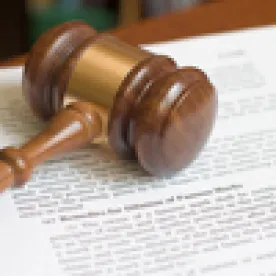Earlier this week, the Federal Circuit in Circuit Check Inc. v. QXQ, Inc. clarified the standard by which a reference may be considered prior art for the purposes of an obviousness determination. See No. 2015-1155, Slip. Op. (Fed. Cir. July 28, 2015). This opinion may be useful for parties asserting patent infringement because it has the potential to reduce the scope of prior art available to an accused infringer alleging obviousness of an asserted patent.
In order for a reference to be considered prior art for the purposes of an obvious determination, the reference must be analogous. Id. at 6 (citing Wang Labs., Inc. v. Toshiba Corp., 993 F.2d 858, 864 (Fed. Cir. 1993). In Circuit Check Inc., the Federal Circuit explained that just because something “is within the common knowledge of humankind does not mean that … [it] is analogous art.” Id. at 7. “Rather, the [pertinent] question is whether an inventor would look to this particular art to solve the particular problem at hand.” Id.
The patents at issue in Circuit Check Inc. claimed systems and methods related to marking interface plates, which are a type of plastic grid used in the testing of circuit boards. Id. at 2. Circuit Check sued QXQ alleging that QXQ’s interface plates infringed its patents. Id. at 3. At trial, QXQ argued that three references – rock carvings, engraved signage, and a machining technique known as Prussian Blue – constituted analogous prior art. Id. Circuit Check submitted evidence that each of these references were not relevant to the problems solved by the patent and would not be considered pertinent by a skilled artisan. Id. at 3-4. Though the jury agreed, finding the asserted claims not invalid, the district court overturned the jury verdict on QXQ’s motion for judgement as a matter of law, finding that “any layman would have understood that interface plates could be marked using the techniques described in the disputed prior art.” Id. at 4.
The Federal Circuit reversed, explaining that in the context of an obviousness analysis, for a reference that is not related to the field of the invention (such as those at issue in this case) to be considered prior art it must be “reasonably pertinent to the particular problem solved by the inventor.” Id. (citing Wyers v. Master Lock Co., 616 F.3d 1231, 1237 (Fed. Cir. 2010)). To be reasonably pertinent, the reference “‘logically would have commended itself to an inventor’s attention in considering his problem.’” Id. at 7 (quoting In re Clay, 966 F.2d 656, 659 (Fed. Cir. 1992)). The Court explained that this framework does not allow an alleged infringer “to transform all systems and methods within the common knowledge into analogous prior art simply by stating that anyone would have known of such a system or method.” Id. “Rather, the question is whether an inventor would look to this particular art to solve the particular problem at hand.” Id.
Thus, because the plaintiff introduced evidence showing that an inventor would not have looked to the proffered prior art, there was substantial evidence supporting the jury’s presumptive finding that “the disputed prior art is not analogous and therefore not within the scope of the prior art.” Id. at 6. The Federal Circuit therefore reversed the district court’s decision overturning the jury’s finding that QXQ had failed to prove obviousness. Id. at 11. In doing so, the Federal Circuit clarified an important limitation on what may be considered prior art in an obviousness analysis, which may prove advantageous to parties asserting patent infringement.





 />i
/>i

